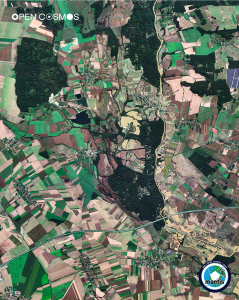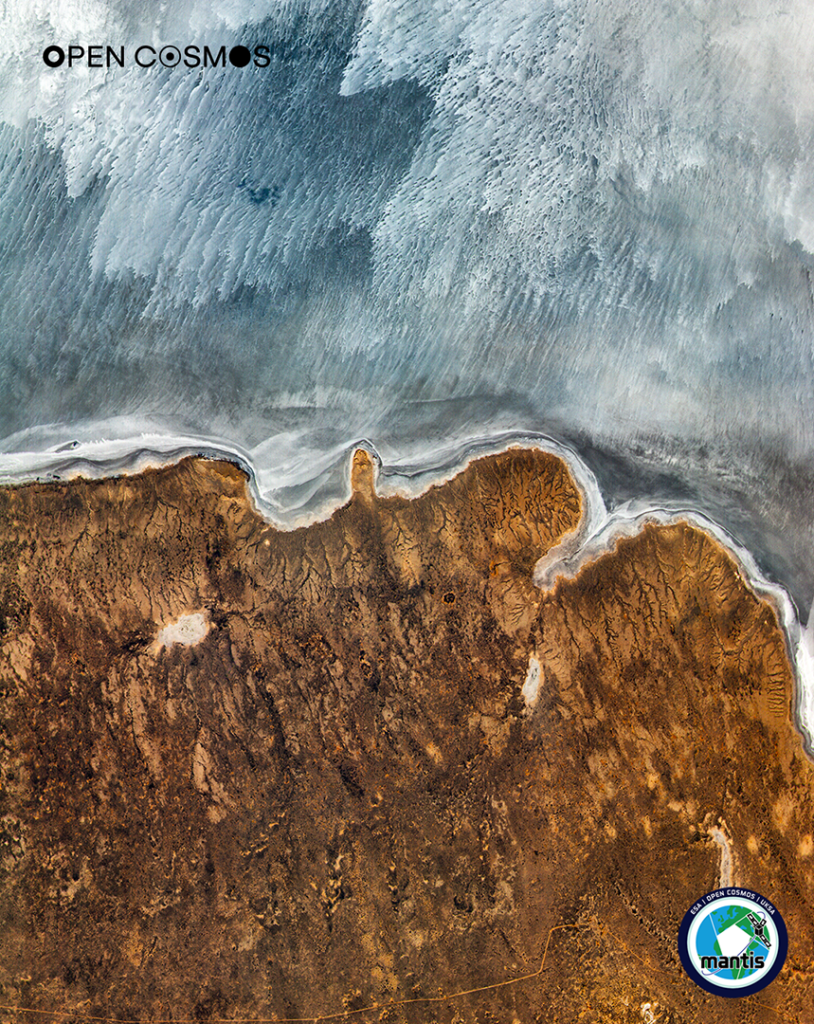MANTIS Mission Manager Marina Mercè reflects on the recently completed MANTIS mission, which provided high-resolution imagery and AI insights for the energy, mining and environmental sectors.
Open Cosmos, a space company that uses space to solve global challenges, recently celebrated the successful completion of the MANTIS (Mission for Terrestrial Imaging Services and Agile Microsatellites) mission, providing cutting-edge Earth Observation (EO) data and paving the way for more sustainable space operations.
Launched on November 11, 2023 on SpaceX’s Transporter-9, MANTIS was the first ESA InCubed satellite supported by the UK Space Agency and was equipped with an iSIM90 high-resolution camera from Satlantis and a reconfigurable AI processor from Ubotica.
Throughout its two-year mission, MANTIS demonstrated how small and agile satellites can have a big impact. It completed more than 10,000 orbits and captured daily high-resolution images covering 500,000 square kilometers. Its advanced optics and AI capabilities transformed raw imagery into actionable intelligence in near real-time, faster and more efficiently than traditional missions. This enables the energy, mining and environmental sectors to make faster and more informed decisions.
Sustainability was also at the forefront of the mission, with the satellite permanently stationary at an altitude of 300 km and designed to disintegrate safely and leave no debris behind upon atmospheric entry.
To learn more about the mission and its achievements, The Innovation Platform spoke to MANTIS Mission Manager Marina Mercè.
What is the main purpose of MANTIS and what makes it unique?
MANTIS’ mission was born with the purpose of targeting addressable customer needs. We provide resolution EO data across customized areas of interest to meet the needs of the oil and gas industry. and investigate and identify other data application areas with similar high-resolution EO data needs.

What made MANTIS unique was the combination of high-resolution multispectral imaging and onboard data processing and AI capabilities, allowing faster and more efficient access to insights directly from orbit. It was also one of the first missions designed around multi-user commercial applications, demonstrating how a single satellite can serve different industries and governments simultaneously.
Did you get the results you expected?
Yes – MANTIS met and exceeded expectations in several areas. This mission successfully demonstrated that small, affordable satellites can provide commercially viable high-quality images of the Earth. This helped mature and validate the modular end-to-end mission infrastructure, from the satellite platform to ground segments and data processing, confirming its reliability for future satellite deployments.
Did you encounter any major challenges during your mission? If so, how did you overcome them?
As with other pioneering missions, one of the key challenges was integrating multiple advanced payloads and onboard AI processing within a 12U small satellite form factor. This required innovative systems engineering and close coordination between partners to optimize power, heat and data management.
The team overcame these challenges by carefully choosing a model philosophy, developing and testing prototypes and qualification models before building flight models, and leveraging Open Cosmos’ end-to-end mission platform that streamlined design, validation, and operations. Despite the global supply chain pressures at the time, MANTIS was successfully launched and nominally operational, proving the effectiveness of the approach.
Can you tell us more about AI’s involvement in the mission?
An innovative, reconfigurable AI processing board was installed on the MANTIS satellite to enable post-processing and identification of features on the satellite.
Onboard algorithms enabled image pre-processing and prioritization to identify areas of interest and optimize data downlinks, reducing the latency and bandwidth required for the mission.
What benefits has MANTIS brought to you from a sustainability perspective?
MANTIS directly contributed to sustainability goals by providing optical imagery and analysis that supports environmental monitoring and resource optimization. That data can be used for applications such as monitoring land degradation, tracking energy infrastructure, and assessing water quality.

From a mission design perspective, MANTIS demonstrated a small satellite with efficient utilization of resources: high data yield, low launch mass, and energy-efficient operation, establishing a new benchmark for sustainable space missions.
Finally, MANTIS will be passivated and deorbited at the end of its mission life, leaving no space debris behind and contributing to the sustainable use of the low Earth orbit environment.
How did MANTIS pave the way for future missions?
MANTIS has helped de-risk the technology and operating model currently used by Open Constellation and the upcoming UK Atlantic Constellation Pathfinder. This demonstrated the viability of modular AI-enabled satellites for scalable multi-partner satellite constellations.
This mission successfully demonstrated that Open Cosmos has the capability to perform end-to-end Earth observation missions, from concept definition to daily operations in orbit, and Open Cosmos has since been able to secure export contracts in Greece and Spain. In short, MANTIS provided the technical and commercial foundation for a new generation of small satellite constellations focused on climate, sustainability and international cooperation.
This article will also be published in the quarterly magazine issue 24.
Source link

